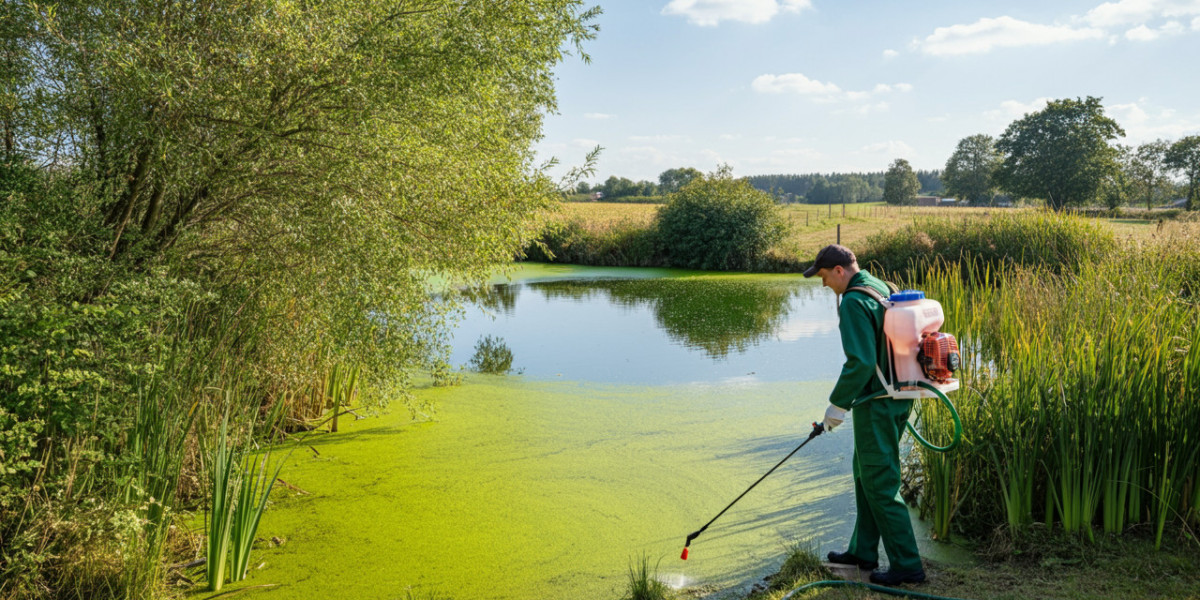Nothing ruins the tranquil beauty of a backyard pond quite like a thick blanket of green algae. Whether you're dealing with stringy masses floating on the surface or murky green water that obscures your fish, algae problems can quickly transform your peaceful water feature into an eyesore.
The good news? Pond algae control doesn't have to be complicated or expensive. With the right understanding of what causes algae growth and which prevention methods work best, you can maintain crystal-clear water year-round.
Common Types of Pond Algae
Before tackling your algae problem, it helps to identify what type you're dealing with. The two most common varieties affect ponds differently.
String algae (also called filamentous algae) forms long, hair-like strands that attach to rocks, plants, and pond walls. You'll often see it floating in green mats on the water surface or clinging to your pond's edges.
Planktonic algae creates that classic "pea soup" appearance, turning your entire pond into a cloudy green mess. This microscopic algae floats freely throughout the water column, making it impossible to see the bottom of your pond.
What Causes Algae to Thrive
Understanding the root causes of algae growth gives you the power to prevent future outbreaks. Algae needs three main elements to flourish:
Sunlight exposure fuels photosynthesis in algae, just like it does in plants. Ponds that receive more than six hours of direct sunlight daily are particularly susceptible to algae blooms.
Excess nutrients act like fertilizer for algae. These typically come from fish waste, decaying plant matter, runoff from fertilized lawns, or overfeeding fish. High levels of nitrogen and phosphorus create the perfect conditions for rapid algae reproduction.
Stagnant water provides algae with stable growing conditions. Without proper water circulation, nutrients accumulate in certain areas while oxygen levels drop, creating an ideal environment for algae to multiply.
Proven Prevention Methods
The most effective approach to pond algae control combines multiple strategies rather than relying on a single solution.
Physical Removal
Manual removal remains one of the most immediate ways to tackle string algae. Use a pond rake, net, or even a toilet brush to pull out visible algae masses. Remove as much as possible before it decomposes and releases nutrients back into the water.
For best results, remove algae during cooler parts of the day when it's less likely to break apart. Dispose of removed algae in your compost pile or garden beds where it can serve as natural fertilizer.
Beneficial Bacteria
Adding beneficial bacteria products helps restore your pond's natural balance by consuming the same nutrients that algae feeds on. These bacteria colonies break down organic waste, fish food, and decaying matter before algae can use them as fuel.
Apply beneficial bacteria regularly throughout the warmer months when algae growth is most active. Most products work best when water temperatures exceed 50°F.
UV Sterilizers
Ultraviolet sterilizers excel at controlling planktonic algae by damaging the algae's cellular structure as water passes through the UV chamber. This method works particularly well for clearing green water and maintaining water clarity.
Choose a UV sterilizer rated for your pond's volume and ensure proper water flow rates for maximum effectiveness. Replace UV bulbs annually since their algae-killing power diminishes over time.
Pond Dye
Pond dyes create a beautiful blue or black tint while limiting sunlight penetration below the surface. By reducing available light, pond dyes help prevent algae photosynthesis without harming fish or beneficial plants.
Apply pond dye according to package directions, typically after major water changes or at the beginning of each season. The dye gradually fades and requires reapplication every few months.
Take Action for Clearer Water
Effective pond algae control requires consistent effort rather than quick fixes. Start by identifying your specific algae type and the conditions promoting its growth. Then implement a combination of prevention methods suited to your pond's size and setup.
Regular maintenance, proper fish feeding practices, and adequate water circulation will keep your pond naturally balanced. Remember that a healthy pond ecosystem with diverse beneficial bacteria, appropriate plant coverage, and good water movement is your best defense against future algae problems.
Start with the most accessible method for your situation, whether that's manual removal or adding beneficial bacteria, then gradually incorporate additional strategies as needed.





